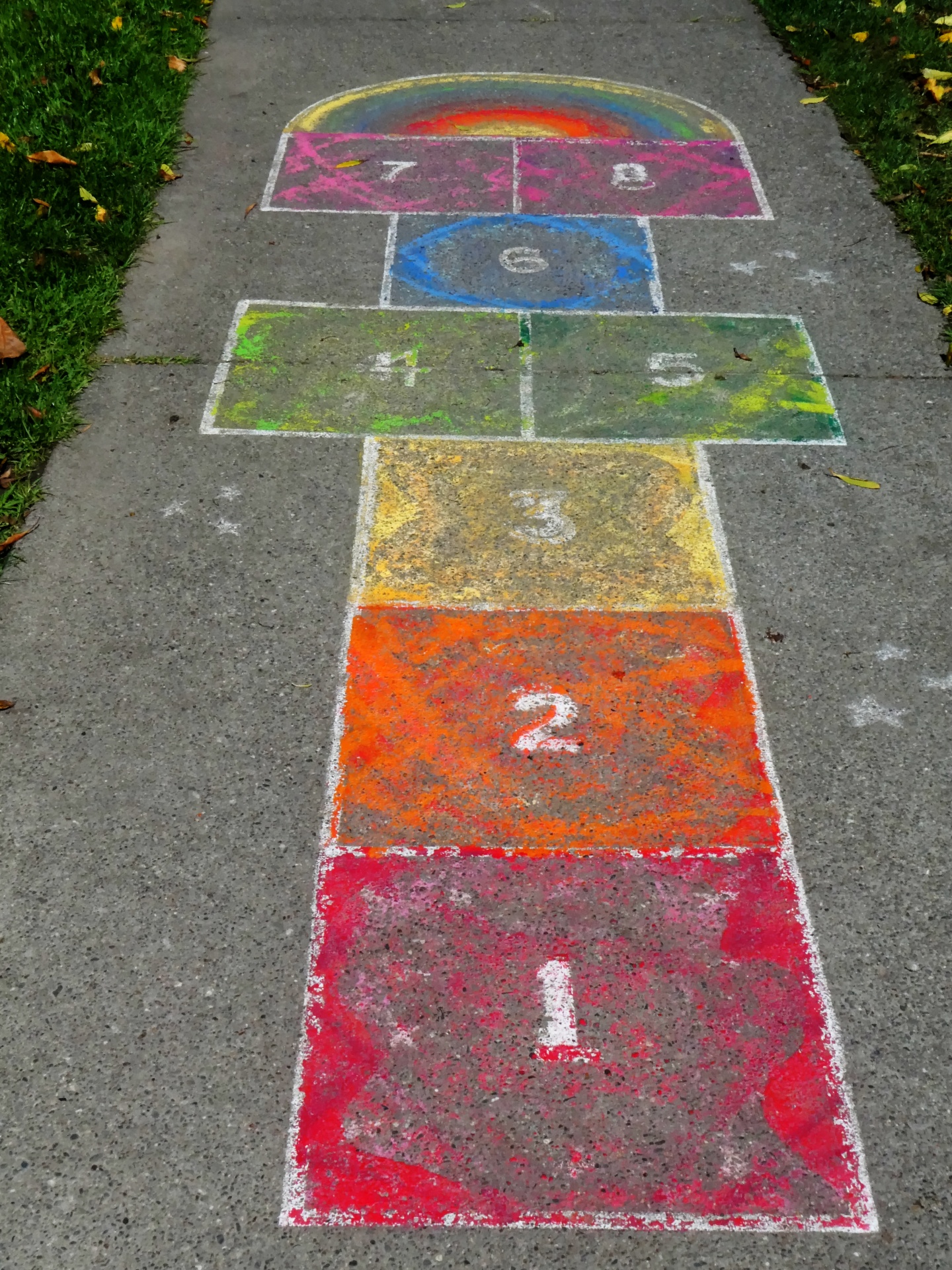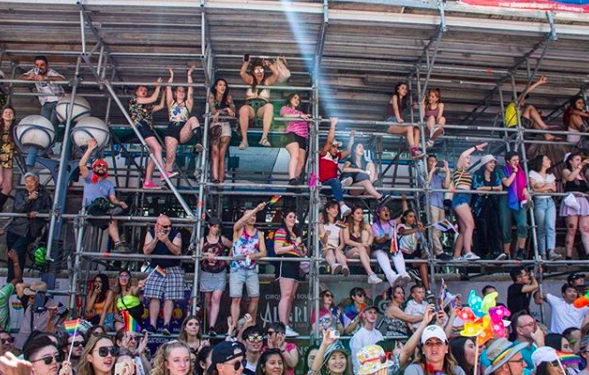
BY: HILARY PEARSON
“Should I go alone?”
My eyes flicker to my laptop screen.
2:04 PM
“It started at two.”
“Yes,” Mom says through the phone. “I think you should go. Just pack a bag with everything you need. You’ll be fine.”
I yank my backpack off the coat rack and put Mom on speaker.
Water bottle.
Sunglasses.
Hat.
Wallet.
Keys.
Protein bars.
“Do you have your special ear pieces?”
“I’m wearing them.”
“You should pack an extra pair just in case.”

Via @pridetoronto on Instagram
I toss an extra pair into my backpack.
“Do you have your pain medication?” Mom asks.
I shake my keychain pill container, unscrew the cap and dump its contents into my hand. “Tylenol and Toradol.”
“What about the seizure medication?” Mom asks.
“Yup, got it. And I’m wearing my medic alert and I have that identification card in my wallet.” I strap my bag on and brush my hair and scan myself in the mirror. “You can’t even tell I have brain damage, Mom.”
Mom laughs. “Well, that’s great, Sweetie. Do you know where you’re going?”
I open Google on my laptop and search Toronto Pride 2019 .
The Toronto Pride Parade returns on Sunday June 23, 2019 to splash the city with every colour of the rainbow. The parade begins at 2 p.m. at Church and Bloor Streets and travels south on Yonge Street before ending at Dundas Street West.
I write on my arm with a permanent marker:
Church
Bloor
Yonge
“Got it. Thanks Mom! I’ll send you pictures and text you that I’m alive.” I scan myself in the mirror. My rainbow coloured rhythmic gymnastics ribbon dangles from my dresser drawer.
I yank the ribbon off and toss the stick onto my bed. I drape the rainbow ribbon around my neck.
“Okay, Sweetie,” Mom says through the phone. “Have fun! Take lots of pictures and lots of breaks and text us you’re alive.
I stumble out of Yonge subway station and onto the street.
The parade. My eyes swim in tears.
People. Everywhere. Two teenage girls run toward the parade— their fingers lace together.
Rainbows paint faces, clothes, flags, windows floats.
I run. My feet beat into the pavement. Five steps and my vision blurs, my ears ring, my body staggers to the left.
My feet play hopscotch without me.
My heart beat booms in my ears.
My hand finds a lamp post near the sidewalk. I crouch on the
curb and my forehead rests on my knee and I close my eyes
and blotchy spots bubble behind my eyelids.
White.
Red.
Blue.
Green.
White.
Yellow.
I breathe in through my nose and out through my mouth.
Whistles, drums, horns, music, screams, cheers. Parade sounds roar in my ears. I adjust my ear pieces. I cram them farther into my ears. The parade sounds soften slightly by a few decibels. I swallow pain medication and push sunglasses onto my face.
I stand up slow and walk toward the parade.
I walk less than a block and I’m there. I squeeze through the crowd and lean against the barricade. I close my eyes. I soak in the energy.
Drag queens loop bead necklaces around my neck. I scoop up pride flags from the ground. I high-five every person I make eye contact with.
I text pictures of the floats and the crowds and my face to my family.
My cousin Isaac texts back, “I’m coming home early! Wanna meet at pride?”
He texts me a meet up spot. I look at the street signs above me and the sky spins. I drift down the street — maybe two blocks—and sit against a brick wall.
Three marijuana scented hippies sit down next to me. They ask me if I’m okay. If I’m too drunk or too high. I am completely sober. I can’t risk taking drugs or drinking alcohol or doing anything that could potentially make my brain injury worse.
It’s easier to just tell people I’m high. I can’t explain brain damage to anyone. No one believes me.
“Yeah, too high.” I say to the hippie.
The hippie says, “right on,” and gives me a fist bump. I give him one of my bead necklaces.
Isaac texts me and asks where I’m at. I tell him that brain damage punched me in the face and I can’t get up. I forward my location through iMessage and close my eyes.
The hippie asks me what my sexual orientation is. I tell him
I’m bi — because it’s easier to say I’m bi than to explain what pansexual means. Most people have never heard of it. Isaac taps my shoe with his shoe. He slides down the wall next to me. “Why do you have writing all over your arm?”
I loop a bead necklace around Isaac’s neck. “In case I get lost, Isaac.” I pull a mini pride flag out of my bag and tuck it behind Isaac’s ear.
“Nice shirt.”
I look down at my new shirt. A white tank top with
“Yaaaass” printed on the front.
“For real… I don’t know where it came from.”
***
The Ontario Brain Injury Association (OBIA) provides their members with a brain injury survivor card. This card includesthe following information:
NO TWO BRAIN INJURIES ARE ALIKE. Symptoms of brain injury MAY include:
-
- Poor coordination or balance
- Slurred speech
- Confusion
- Impatience
- Impaired judgement
- Difficulty processing
- Agitation
- Communication difficulties
- Impulsivity
- Memory problems
- Disorientation
- Hearing or vision loss
- Seizure disorder
This card can be used to communicate with others in public if the individual is experiencing a flare up of symptoms. Many ABI victims can appear intoxicated to others who do not understand their behaviours while in pain or experiencing brain fog or sudden memory loss.
Hilary is a Toronto-based non-fiction writer and UofT master’s student. Hilary is recovering from TBI, PCS— and spends much of her free time on FaceTime with Isla, her baby niece.”




